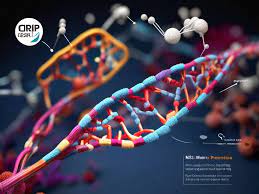
CRISPR Technology and its Latest Applications
CRISPR Technology and its Latest Applications
GS-3: Biotechnology (Science and Technology)
(UPSC/State PSC)
Important for prelims
CRISPR technology, Gene editing, Gene editing techniques, DNA, RNA.
Important for mains
About Gene Editing, Gene Editing Technologies, CRISPR Technology and its Applications, Importance of Gene Editing, Concerns related to it, Conclusion.
Feb. 14, 2024
Why in news:
Recently, it has been observed by scientists that highly targeted CRISPR technology leads to gene editing in living animals.
- Recently, the US FDA has approved Casgevi (developed by Vertex Pharmaceuticals and CRISPR Therapeutics), and Lifegenia (developed by Bluebird Bio) for people 12 years of age and older.
About Gene Editing:
- A technique by which an organism's DNA is altered by adding, deleting, or changing genetic material at specific locations in the genome.
- Gene editing includes technologies such as Zinc Finger Nucleases, Transcription Activator-Like Effector Nucleases (TALENs), CRISPR-Cas9 editors and Prime Editors. All these techniques can be used to repair, modulate, replace or add genes to achieve the desired genotype.
- Applications: Correcting genetic defects, treating diseases and preventing their spread, and improving agricultural crops, etc.
Significance of Gene Editing:
- Tackling and defeating diseases: Most of the deadly and serious diseases in the world have resisted destruction. Many of the genetic mutations suffered by humans will end only if we actively intervene and genetically engineer the next generation.
- Extend lifespan: Genome editing can extend human lifespan. Human lifespan has already increased by many years, and we are already living longer.
- Increase in food production and its quality: Genetic engineering can design foods that can withstand harsh temperatures and are packed with all the right nutrients.
- Pest resistant crops: Genome editing can solve the pest and nutritional challenges facing agriculture. Instead of using a lot of pesticides and insecticides, we can protect our plant in a healthy way.
About CRISPR Technology:
- Full form of CRISPR technology: Clustered Regularly Interspaced Short Palindromic Repeats. It was developed in the year 2012.
- It is a component of the bacterial immune system that can cut DNA, and has been repurposed as a gene editing tool.
- It acts as a precise pair of molecular scissors that can cut the target DNA sequence guided by a customizable guide.
About CRISPR-Cas9:
- Clustered regularly interspaced short palindromic repeats (CRISPR) is a DNA sequence that is part of the bacterial defense system.
- Cas9 (CRISPR-associated) is the name of the protein that transfers resistance.
- It is an enzyme that works like a pair of molecular scissors, capable of cutting strands of DNA.
- It allows researchers to easily alter DNA sequences and modify gene function.
- For example, CRISPR-Cas9 technology was established to revolutionize medicine in the treatment of diseases such as sickle cell anemia and agriculture.
Applications of CRISPR-Cas9:
- Gene-driven inheritance: Using CRISPR-Cas9 technology, researchers succeeded in passing their anti-malaria genes to the offspring of modified and wild mosquitoes, thereby spreading resistance throughout the laboratory population.
- Animal models: CRISPR-Cas9 genome editing in specific tissues: Researchers have been able to modify the genomes of specific tissues, such as liver and brain tissues, using hydrodynamic injection and adeno-associated viruses.
- It can be used to create animal models to mimic human diseases and to understand disease development by mutating or silencing genes.
- Multiple gene mutagenesis: CRISPR-Cas9 can be used to generate mutants for target genes.
- Treatment of diseases: CRISPR-Cas9 can be applied to cells in vivo or ex vivo. In the in vivo approach, CRISPR-Cas9 is transferred directly into the body's cells using viral or non-viral methods. In the ex vivo approach, the cells are first removed from the body; CRISPR is then applied to the cells and transferred back into the body.
- RNA editing: Single-stranded RNA (ssRNA) sequences can also be edited by CRISPR-Cas9.
Concerns related to Gene Editing:
- Ethical dilemma: Gene editing is completely unnatural and tantamount to playing God.
- Security concerns: Small changes made on a small scale can have unexpected consequences.
- Biodiversity: Diversity in all species of animals is the key to evolution on Earth. Genetically engineering our species would have a detrimental effect on our genetic diversity – as would something like cloning.
- Tool of rich people: Gene therapy is extremely expensive which cannot be afforded by common people.
Conclusion:
- Gene editing is a biotechnology capable of realizing better outcomes. With proper legislation and control over its use, it will definitely prove to be a great gift to mankind in the future.
Source: The Hindu
----------------------------------------------
Mains Question:
Write a short note on CRISPR technology and its latest applications.
What is CRISPR technology? Throw light on its importance and concerns.